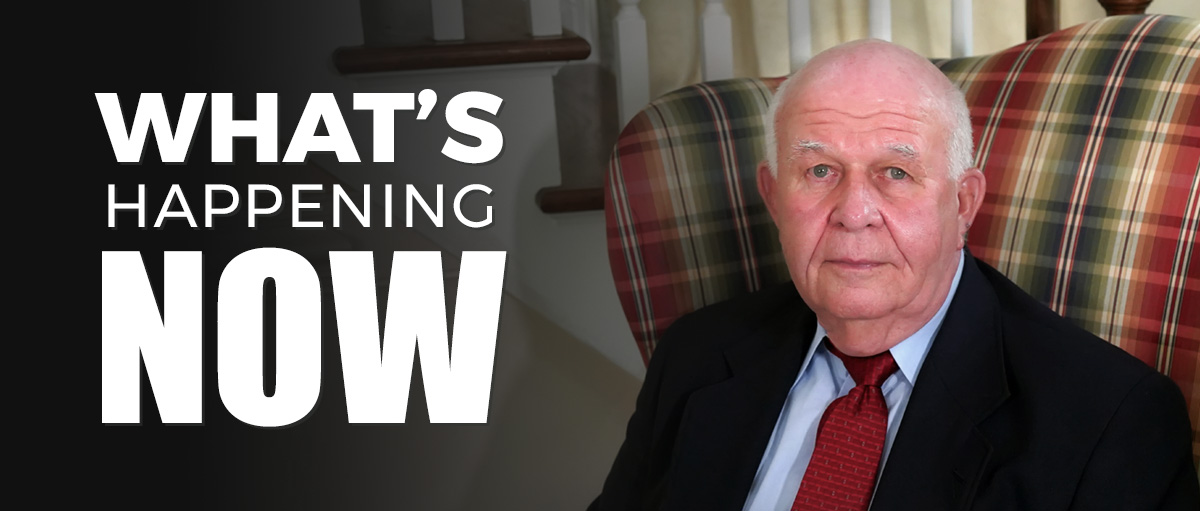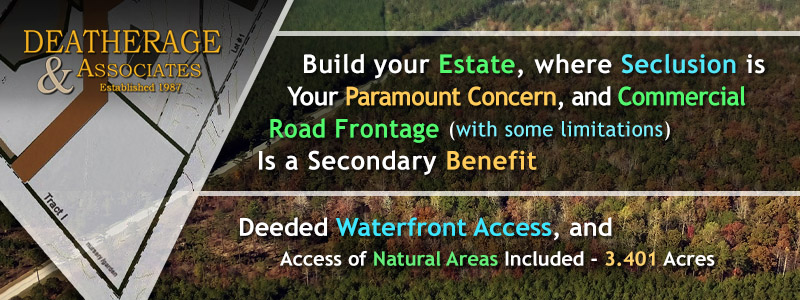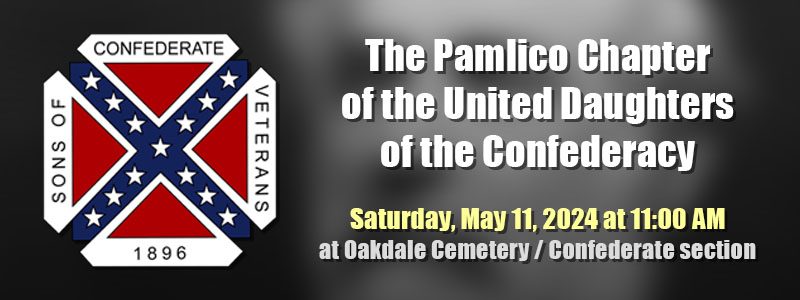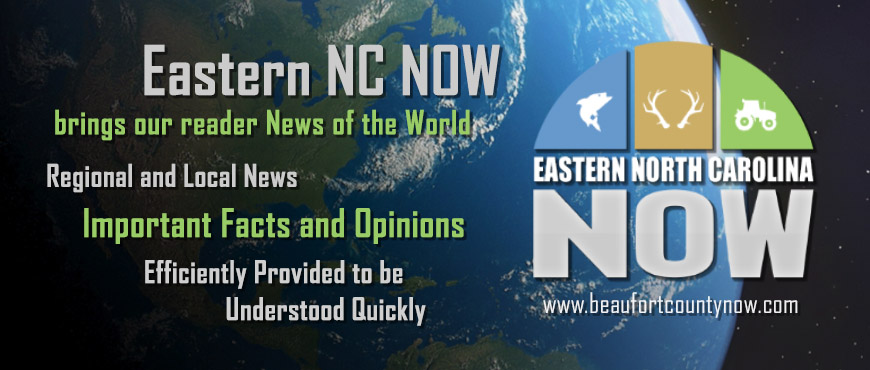Your Basic Needs: Food, Shelter and The TRUTH
Close partisan divide will Persist
Publisher's note: This article appeared on John Hood's daily column in the Carolina Journal, which, because of Author / Publisher Hood, is linked to the John Locke Foundation.
Whether you are a North Carolina Democrat who dreams of recapturing your party's longtime control of the state legislature or a North Carolina Republican who dreams of recapturing your party's recent control of the governorship and state supreme court, I would urge you to calibrate your expectations to reality.
I don't mean that you shouldn't try or expect to win big victories. Democrats could very well make sizable gains in the General Assembly in future election cycles. Republicans could very well contest Gov. Roy Cooper's reelection in 2020 and achieve other successes. But don't expect any such victory to represent a permanent realignment. Don't expect an upcoming election to "settle things." It won't.
The reason? North Carolina has one of America's most closely divided electorates.
This isn't about party registration, which has become a weak indicator. For a variety of reasons, we just aren't the joiners we used to be. It's like people attending churches but not becoming members. It's commonplace.
In politics, most people have strong partisan loyalties and act on them, regardless of whether they have a D or an R or something else listed on their voter registration. Indeed, the share of North Carolinians who split their tickets - Democrat for one office, Republican for another, perhaps a third-party pick on occasion - is about half of what it was a generation or two ago.
North Carolina's swing voters still matter, to be sure, because neither the Republican nor the Democratic coalitions are a majority in our state. The precise numbers depend on the measurement and time period. According to the Gallup Organization's 2016 polling, for example, 43 percent of North Carolina voters said they leaned Democratic and 42 leaned Republican. That's well within the margin of sampling error, so you can treat that as a tie.
Using a combination of other surveys generated by North Carolina-based pollsters focused on likely voters, I developed a model last fall that had the two partisan coalitions tied at 45 percent, with only 10 percent truly in play as swings.
Not surprisingly, we ended up with competitive elections. In the 2016 U.S. Senate race, Richard Burr got about 51 percent of the vote to Deborah Ross's 45 percent, with Libertarian Sean Haugh pulling nearly 4 percent. In the presidential race, Donald Trump got just shy of 50 percent to Hillary Clinton's 46 percent, with the remainder going to Libertarian Gary Johnson or other options. Roy Cooper outperformed other Democrats with swing voters, edging out incumbent Republican Pat McCrory by two-tenths of a point - 49 percent to 48.8 percent, with Libertarian Ron Cecil polling at 2 percent - in one of the closest gubernatorial elections in American history.
Yes, Republicans did preserve their supermajorities in the North Carolina General Assembly last fall. That was a product of favorable electoral maps, however, not overwhelming support. GOP legislative candidates did get more votes across the state than the Democrats did - that's been true for all the legislative cycles since 2010 - but the margins weren't large. (By the way, Republicans often got more votes than Democrats during the decade of the 2000s, as well, but Democrats controlled the legislature, anyway, thanks to favorable district maps of their own.)
How does North Carolina compare to the rest of the country when it comes to the partisan divide? The Gallup figures are useful on this point. Throughout 2016, they produced multiple surveys for all 50 states.
If you subtract Democratic preference (again, that's not the same as party registration) from Republican preference, only nine states have values no greater than two percentage points. These nine electorates, in other words, are the most balanced in statewide party preference, their differences much too small to be statistically significant: Arizona, Colorado, Georgia, Florida, Nevada, North Carolina, Pennsylvania, Virginia, and Wisconsin.
These are among the places most likely to host competitive presidential, gubernatorial, and Senate contests in the future. Either major party can have a successful election cycle. At the same time, neither party can afford to get complacent.
Go Back
Whether you are a North Carolina Democrat who dreams of recapturing your party's longtime control of the state legislature or a North Carolina Republican who dreams of recapturing your party's recent control of the governorship and state supreme court, I would urge you to calibrate your expectations to reality.
I don't mean that you shouldn't try or expect to win big victories. Democrats could very well make sizable gains in the General Assembly in future election cycles. Republicans could very well contest Gov. Roy Cooper's reelection in 2020 and achieve other successes. But don't expect any such victory to represent a permanent realignment. Don't expect an upcoming election to "settle things." It won't.
The reason? North Carolina has one of America's most closely divided electorates.
This isn't about party registration, which has become a weak indicator. For a variety of reasons, we just aren't the joiners we used to be. It's like people attending churches but not becoming members. It's commonplace.
In politics, most people have strong partisan loyalties and act on them, regardless of whether they have a D or an R or something else listed on their voter registration. Indeed, the share of North Carolinians who split their tickets - Democrat for one office, Republican for another, perhaps a third-party pick on occasion - is about half of what it was a generation or two ago.
North Carolina's swing voters still matter, to be sure, because neither the Republican nor the Democratic coalitions are a majority in our state. The precise numbers depend on the measurement and time period. According to the Gallup Organization's 2016 polling, for example, 43 percent of North Carolina voters said they leaned Democratic and 42 leaned Republican. That's well within the margin of sampling error, so you can treat that as a tie.
Using a combination of other surveys generated by North Carolina-based pollsters focused on likely voters, I developed a model last fall that had the two partisan coalitions tied at 45 percent, with only 10 percent truly in play as swings.
Not surprisingly, we ended up with competitive elections. In the 2016 U.S. Senate race, Richard Burr got about 51 percent of the vote to Deborah Ross's 45 percent, with Libertarian Sean Haugh pulling nearly 4 percent. In the presidential race, Donald Trump got just shy of 50 percent to Hillary Clinton's 46 percent, with the remainder going to Libertarian Gary Johnson or other options. Roy Cooper outperformed other Democrats with swing voters, edging out incumbent Republican Pat McCrory by two-tenths of a point - 49 percent to 48.8 percent, with Libertarian Ron Cecil polling at 2 percent - in one of the closest gubernatorial elections in American history.
Yes, Republicans did preserve their supermajorities in the North Carolina General Assembly last fall. That was a product of favorable electoral maps, however, not overwhelming support. GOP legislative candidates did get more votes across the state than the Democrats did - that's been true for all the legislative cycles since 2010 - but the margins weren't large. (By the way, Republicans often got more votes than Democrats during the decade of the 2000s, as well, but Democrats controlled the legislature, anyway, thanks to favorable district maps of their own.)
How does North Carolina compare to the rest of the country when it comes to the partisan divide? The Gallup figures are useful on this point. Throughout 2016, they produced multiple surveys for all 50 states.
If you subtract Democratic preference (again, that's not the same as party registration) from Republican preference, only nine states have values no greater than two percentage points. These nine electorates, in other words, are the most balanced in statewide party preference, their differences much too small to be statistically significant: Arizona, Colorado, Georgia, Florida, Nevada, North Carolina, Pennsylvania, Virginia, and Wisconsin.
These are among the places most likely to host competitive presidential, gubernatorial, and Senate contests in the future. Either major party can have a successful election cycle. At the same time, neither party can afford to get complacent.
| John Locke Foundation: Prudent Policy / Impeccable Research - Volume CCXLIX | Carolina Journal, Editorials, Op-Ed & Politics | Student Governments can Help to Restore Faith in Higher Education |
Latest Op-Ed & Politics
|
how many of these will come to North Carolina?
Published: Tuesday, April 23rd, 2024 @ 1:32 pm
By: John Steed
|
|
Barr had previously said he would jump off a bridge before supporting Trump
Published: Tuesday, April 23rd, 2024 @ 11:37 am
By: John Steed
|
|
Babis is leader of opposition in Czech parliament
Published: Tuesday, April 23rd, 2024 @ 10:28 am
By: John Steed
|
|
illegal alien "asylum seeker" migrants are a crime wave on both sides of the Atlantic
Published: Tuesday, April 23rd, 2024 @ 9:44 am
By: John Steed
|
|
only one holdout against acquital
Published: Tuesday, April 23rd, 2024 @ 9:01 am
By: John Steed
|
|
DEI now includes criminals?
Published: Monday, April 22nd, 2024 @ 8:33 pm
By: John Steed
|
|
Biden regime intends to force public school compliance as well as colleges
Published: Monday, April 22nd, 2024 @ 1:55 pm
By: John Steed
|
|
clamps down on oil drilling in Alaska
Published: Monday, April 22nd, 2024 @ 9:09 am
By: John Steed
|
|
plan put in place by Eric Holder
Published: Monday, April 22nd, 2024 @ 7:38 am
By: John Steed
|
|
prosecutors appeal acquittal of member of parliament in lower court for posting Bible verse
Published: Sunday, April 21st, 2024 @ 9:14 am
By: John Steed
|
|
Biden abuses power to turn statute on its head; womens groups to sue
Published: Friday, April 19th, 2024 @ 8:28 pm
By: John Steed
|
|
The Missouri Senate approved a constitutional amendment to ban non-U.S. citizens from voting and also ban ranked-choice voting.
Published: Friday, April 19th, 2024 @ 12:33 pm
By: Daily Wire
|
























